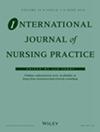Predictive Model for Emergence Agitation in Patients Awakening From General Anaesthesia After Transurethral Resection of the Prostate
Abstract
Aims
The aim of this study was to develop and verify a new emergence agitation risk prediction model based on the electronic medical records of patients undergoing transurethral resection of the prostate.
Background
The incidence of prostate disease in elderly men is high, and the harm caused by emergence agitation in patients after transurethral resection of the prostate is serious. It is necessary to develop a predictive model for emergence agitation in patients undergoing transurethral resection of the prostate.
Design
This was a retrospective cohort study. Patients who underwent transurethral resection of the prostate from January 2016 to December 2020 formed the study population.
Methods
The multivariate logistic backward stepwise method was used to further evaluate the variables with p-values of less than 0.1 in the univariate analysis. A receiver operating characteristic curve was used to analyse the discrimination of models, and the Hosmer–Lemeshow test was used to evaluate calibration.
Results
A total of 956 patients undergoing transurethral resection of the prostate were included in the study. The incidence of emergence agitation in the deduction data set and the verification data set were 24.6% and 23.2%, respectively. Multiple logistic regression analysis showed that age (OR = 1.05, 95% CI, 1.02–1.09), urea (OR = 1.14, 95% CI, 1.05–1.29), postoperative pain (OR = 3.74, 95% CI, 1.99–7.03) and catheter-related bladder discomfort (OR = 2.26, 95% CI, 1.80–2.84) were independent predictors of emergence agitation in patients with transurethral resection of the prostate. The prediction model showed good discrimination in both the derivation dataset and the verification dataset (the area under the curve was 0.737 and 0.804, respectively) and calibration (Hosmer–Lemeshow test p = 0.895 and 0.418, respectively).
Conclusion
This low-cost low-risk clinical prediction model based on electronic medical records is simple and practical, easy to generalize, and contributes to health care providers identifying individuals at high risk of emergence agitation in patients undergoing transurethral resection of the prostate.

 求助内容:
求助内容: 应助结果提醒方式:
应助结果提醒方式:


